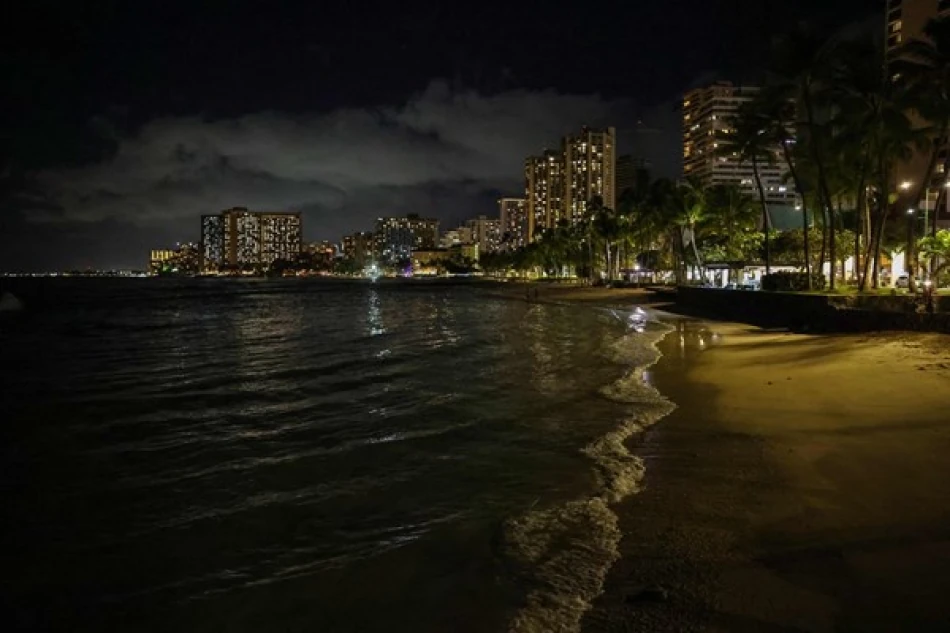
Powerful Earthquake Triggers Tsunami Waves Reaching Hawaii's Shores
Massive 8.8 Earthquake Strikes Russia's Kamchatka Peninsula, Triggering Pacific-Wide Tsunami Alert
A powerful 8.8-magnitude earthquake off Russia's Kamchatka Peninsula has generated tsunami waves up to five meters high, prompting evacuations across the Pacific Rim from Hawaii to Japan. The shallow quake, centered just 19 kilometers below the surface, demonstrates the ongoing seismic volatility of the Pacific Ring of Fire and highlights the interconnected vulnerability of Pacific coastal communities to distant geological events.
Immediate Impact and Response
The earthquake struck approximately 119 kilometers from Petropavlovsk-Kamchatsky, a city of 165,000 residents in Russia's Far East. While the remote location limited immediate casualties, the shallow depth of the quake amplified its tsunami-generating potential, creating waves that radiated across the Pacific Ocean at jet-like speeds.
Russian authorities reported building damage and several injuries in the sparsely populated region. However, the earthquake's most significant impact was felt thousands of miles away as tsunami waves began striking distant shores.
Hawaii Under Threat
Hawaiian authorities issued urgent evacuation orders for coastal areas, instructing residents to move to higher ground or above the fourth floor of buildings. The U.S. Coast Guard ordered all vessels to leave harbors as waves measuring up to 1.7 meters reached the islands. Despite initial fears, Hawaii Governor Josh Green later confirmed no catastrophic damage, though all flights to and from Maui were canceled as a precautionary measure.
Japan's Painful Memories Resurface
The tsunami alert triggered particularly acute concerns in Japan, where memories of the devastating 2011 earthquake and tsunami remain fresh. Evacuation orders were issued for most of Japan's Pacific coast, with sirens wailing across coastal towns.
Three tsunami waves were recorded hitting Japan, with the largest reaching 1.3 meters. Crucially, Chief Cabinet Secretary Yoshimasa Hayashi confirmed no injuries or damage to nuclear power facilities—a critical concern given the Fukushima disaster that followed the 2011 tsunami.
The Pacific Ring of Fire's Persistent Threat
This earthquake underscores the ongoing seismic activity along the Pacific Ring of Fire, a horseshoe-shaped zone of frequent earthquakes and volcanic eruptions that encircles the Pacific Ocean. Kamchatka Peninsula sits at one of the most geologically active sections of this zone, where the Pacific Plate subducts beneath the North American Plate.
The region's geological characteristics make it particularly prone to large-magnitude earthquakes. The relatively shallow depth of this quake—just 19.3 kilometers below the surface—maximized both ground shaking and tsunami generation potential.
Global Coordination and Modern Warning Systems
The incident showcased both the strengths and limitations of international tsunami warning systems. The U.S. Pacific Tsunami Warning Center successfully tracked wave propagation across the ocean, providing crucial hours of advance warning to at-risk communities.
Predicted wave heights varied significantly by location: Russian and Ecuadorian coasts faced potential waves exceeding three meters, while Japan, Hawaii, Chile, and the Solomon Islands braced for waves between one and three meters high.
Political Response
President Donald Trump acknowledged the crisis on social media, highlighting the federal coordination required for such trans-Pacific emergencies. The response demonstrated how natural disasters transcend political boundaries, requiring immediate international scientific cooperation.
Scientific Assessment and Future Outlook
Daniela Chebrov, director of the Kamchatka branch of the Geophysical Service, noted that despite the earthquake's magnitude, local shaking intensity was lower than expected due to the specific characteristics of the epicenter. This phenomenon often occurs with offshore earthquakes where energy is partially absorbed by ocean water.
Aftershocks continue to rattle the region, with one measuring 6.9 magnitude recorded shortly after the main event. While scientists expect continued seismic activity, no stronger earthquakes are anticipated in the immediate future.
Implications for Pacific Rim Preparedness
This event serves as a stark reminder of the Pacific's geological interconnectedness. An earthquake in Russia's remote Far East can threaten lives and infrastructure across multiple continents within hours. The incident validates investments in tsunami warning systems while highlighting the need for continued vigilance and preparedness across all Pacific coastal communities.
The successful coordination between Russian, American, and Japanese authorities demonstrates how shared geological threats can foster international cooperation, even amid broader geopolitical tensions. As climate change and development pressures increase coastal populations, such events underscore the critical importance of robust early warning systems and emergency preparedness protocols.
Most Viewed News

 Layla Al Mansoori
Layla Al Mansoori






